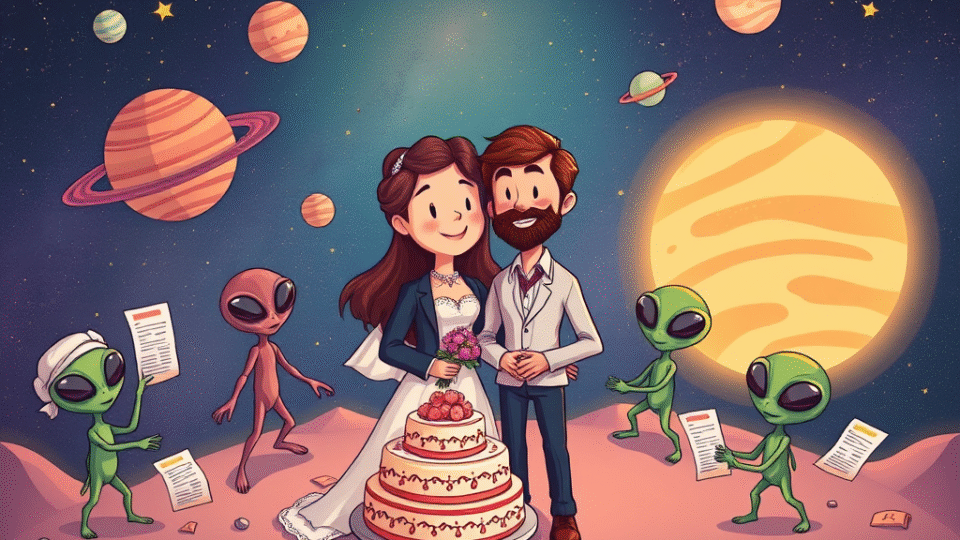
The Hitchhiker’s Guide to Marriage
Marriage is a peculiar human ritual in which two individuals voluntarily sign a lifelong partnership agreement drafted by poets and enforced by lawyers. It is often described as an act of love, but more accurately functions as a semi-permanent merger between two people who once thought sharing a Netflix password was romantic and later discovered it was an early rehearsal for joint tax filings.
The origins of marriage are lost somewhere in humanity’s misty prehistory—roughly the same period when people thought fire was a pet. Anthropologists suggest it began as a convenient way to decide who owned which offspring, whose turn it was to hunt dinner, and who got to sleep farthest from the in-laws. Over time, it evolved into a celebrated cultural institution complete with white clothing, cake, and the silent calculation of how many guests you actually like.
The central human delusion surrounding marriage is that two people, by making loud promises in front of witnesses, can maintain a stable orbit around one another indefinitely. Statistically speaking, this is roughly as probable as maintaining a perfect soufflé through an earthquake, but humans continue to attempt it with admirable optimism and questionable spreadsheets.
Galactic Context
Across the galaxy, coupling takes many forms, few of which involve tax brackets. The inhabitants of the planet Zarquon IX, for instance, engage in quantum pairing, in which partners exist in a shared emotional superposition until observed by their parents, at which point the relationship immediately collapses.
The Yelk of Proxima Beta form marital clusters of up to 48 members connected by a mucus-based telepathic network. They claim this system eliminates jealousy, though it does occasionally result in someone feeling mysteriously betrayed when another cluster member orders take-out alone.
On Trillith Prime, beings reproduce via osmosis and regard the human concept of “marriage” as an elaborate friendship bracelet with paperwork. They do, however, admire the efficiency of wedding registries, having adopted them wholesale for equipment upgrades and limb replacements.
Meanwhile, the Vlarn Collective considers marriage an interstellar diplomatic arrangement requiring constant negotiation, trade concessions, and the ceremonial exchange of household chores. Anthropologists who’ve studied this note that it bears an uncanny resemblance to Earth marriages after the first year.
Cultural Notes
Human marriage ceremonies vary wildly but share certain constants: vows promising eternal devotion, uncomfortable formalwear, and a large cake structurally unsuited to gravity. The event is typically attended by family members whose main role is to loudly predict failure while pretending to enjoy chicken.
After the ceremony, the couple embarks on a honeymoon, a brief period of bliss before they realize that “sharing everything” includes thermostat settings and digestive noises. The honeymoon is followed by real life, during which the partners learn that love may be blind, but laundry isn’t.
Final Observations
Marriage, then, is humanity’s way of telling the universe, “We acknowledge entropy, but we’d like to face it with someone who laughs at the same memes.” It is at once absurd, noble, and deeply inefficient—precisely the kind of idea that ensures humans remain one of the galaxy’s more entertaining species.
(Editor’s Note: Interstellar sociologists have concluded that marriage survives not because it makes sense, but because it makes stories—and humans are addicted to those.)











Leave a Reply